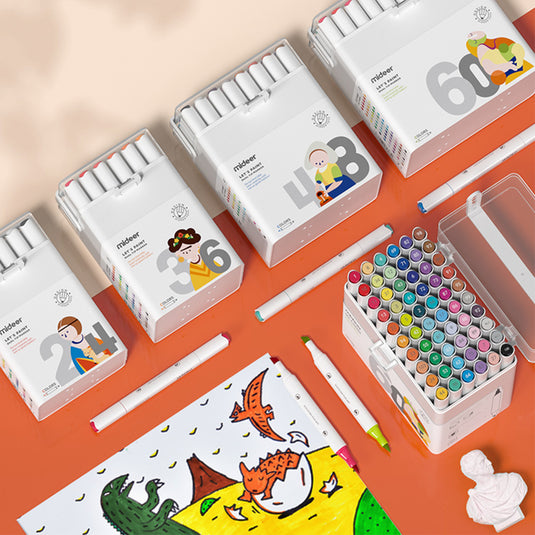If this is interesting to you, why not coloring with markers.
Coloring with markers is a popular and enjoyable activity that allows individuals to express their creativity and create stunning works of art. Whether you are a beginner or have some experience in the coloring industry, mastering marker coloring techniques can take your artwork to the next level. In this article, we will explore some valuable tips and techniques to help beginners enhance their coloring skills.
Understanding Marker Types
Before diving into the world of marker coloring, it is essential to understand the different types of markers available in the market. There are various markers specifically designed for coloring, such as alcohol-based markers, water-based markers, and brush markers. Each type has its unique characteristics and effects on paper.
Alcohol-based markers are known for their vibrant colors and smooth blending capabilities. They are perfect for creating gradients and shading. Water-based markers, on the other hand, are more versatile and can be used for both coloring and watercolor techniques. Brush markers have a flexible brush tip, allowing for precise strokes and detailed coloring.
Choosing the Right Paper
When it comes to marker coloring, selecting the right paper is crucial. Not all papers are suitable for markers, as some may bleed or feather, resulting in a messy and unsatisfactory outcome. It is recommended to use a heavyweight paper specifically designed for markers or a smooth, thick cardstock.
Experiment with different papers to find the one that works best for you. Look for papers that have a good ink absorption rate, preventing the colors from bleeding through the page. Additionally, consider the texture of the paper. Some markers glide more smoothly on a smooth surface, while others may work better on a slightly textured paper.
Blending and Layering Techniques
One of the key techniques in marker coloring is blending. Blending allows you to create smooth transitions between colors and achieve a more realistic and professional look. There are several ways to blend markers, including using a colorless blender marker, overlapping colors, or using a blending pen or brush.
To blend colors, start by selecting two or more colors that you want to blend together. Apply the lighter color first and then gradually add the darker color, overlapping the two. Use a colorless blender marker or a blending pen to go over the overlapped area, smoothing out any harsh lines and creating a seamless blend.
Layering is another technique that can add depth and dimension to your artwork. Start by coloring a base layer with a light color and then gradually build up the intensity by adding more layers of the same or different colors. This technique allows you to create shadows, highlights, and texture, giving your artwork a more realistic and dynamic appearance.
Adding Details and Textures
Details and textures can bring your coloring to life and make it more visually appealing. There are various ways to add details and textures to your artwork using markers. One technique is stippling, which involves creating small dots or dots of varying sizes to add texture and depth to your coloring.
Another technique is hatching and cross-hatching, which involves drawing parallel lines or intersecting lines to create shading and texture. This technique is particularly useful for creating texture in objects such as fur, wood, or fabric.
Experiment with different techniques and explore the possibilities of marker coloring. Don't be afraid to try new things and push the boundaries of your creativity. With practice and patience, you will master marker coloring techniques and create stunning works of art.
In conclusion, mastering marker coloring techniques is an exciting journey for beginners in the coloring industry. By understanding marker types, choosing the right paper, practicing blending and layering techniques, and adding details and textures, you can elevate your coloring skills and create beautiful artwork. Remember to have fun and enjoy the process of exploring the endless possibilities of marker coloring!
